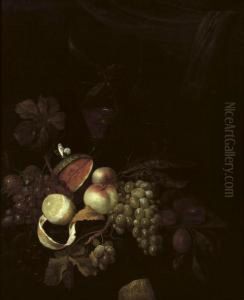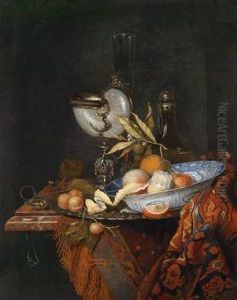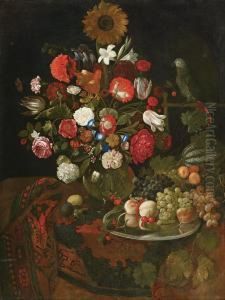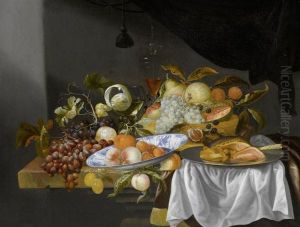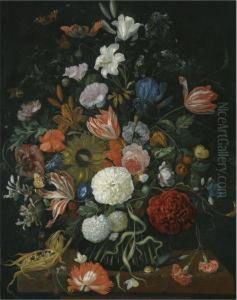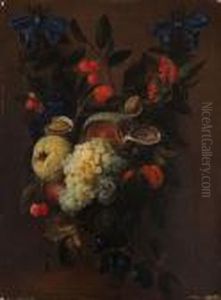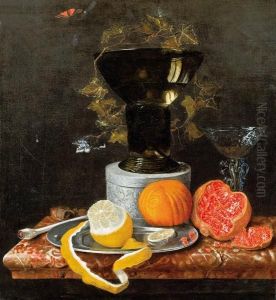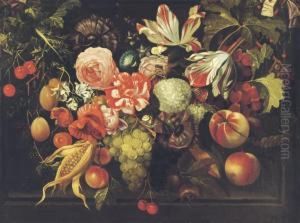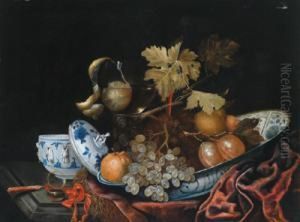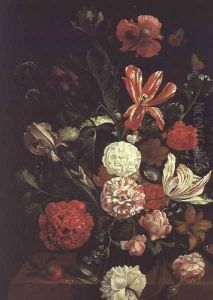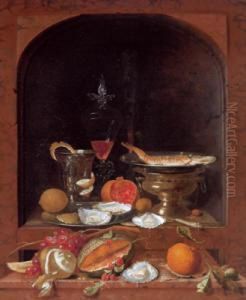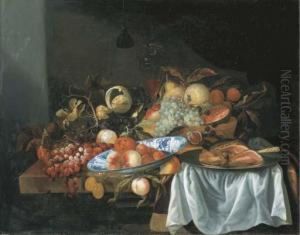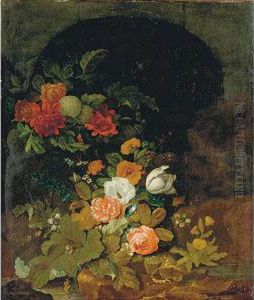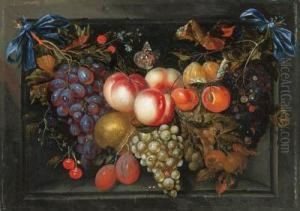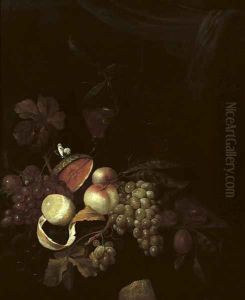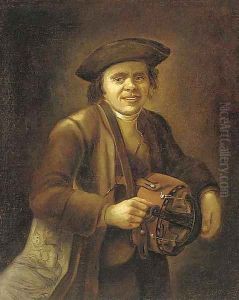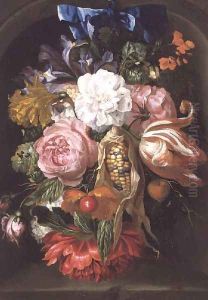Jacob Rootius Paintings
Jacob Rootius, a lesser-known yet intriguing figure in the world of Dutch Golden Age painting, was born in 1644 in Middelburg, a city in the province of Zeeland, Netherlands. The Dutch Golden Age was a period of great wealth and cultural achievement for the Netherlands, and it produced some of the most famous artists in history, such as Rembrandt and Vermeer. However, among the constellation of artists from this era, Rootius carved out a niche that, while not as widely recognized, contributed to the rich tapestry of Dutch art.
Not much is documented about Rootius's early life or training, which is not uncommon for artists of his time. It is believed that he received his artistic education locally, possibly in Middelburg or nearby. His work mostly consisted of portraits, a popular genre in Dutch Golden Age painting, as the burgeoning middle class sought to immortalize themselves and their loved ones in art. Rootius's portraits are noted for their detailed representation of clothing and accessories, providing a window into the fashion and material culture of 17th-century Netherlands.
Despite the scarcity of records regarding his personal life, Rootius's surviving works suggest that he was deeply entrenched in the cultural and social milieu of his time. His ability to capture the nuances of facial expressions and the textures of fabrics speaks to a keen observational skill and a mastery of painting techniques. However, Rootius did not gain the same level of fame as some of his contemporaries, possibly due to the competitive nature of the art market in the Dutch Golden Age or the geographical limitations of working in Zeeland, which was somewhat removed from the artistic hubs of Amsterdam and Haarlem.
Jacob Rootius died in 1681, in Middelburg. While his oeuvre may not be extensive, the quality and historical value of his work have garnered him a place among the artists of the Dutch Golden Age worth studying. His portraits not only showcase the skill of an adept painter but also serve as historical documents that offer insights into the lives of people from a bygone era. In recent years, there has been a growing interest in rediscovering and reevaluating artists like Rootius, whose contributions to art history provide a broader understanding of the cultural landscape of 17th-century Netherlands.
